This week Congress moved closer to a pathway forward to increase the nation’s borrowing authority– a key next step in the lawmaker’s winter agenda. In addition, the next Inspector General (IG) for the U.S. Department of Education (ED) and chair for the Federal Communications Commission (FCC) was confirmed by the Senate while the Department approved another state American Rescue Plan (ARP) application and unveiled new priorities for discretionary grant programs.
 Congress Nears Agreement on Nation’s Debt Limit
Congress Nears Agreement on Nation’s Debt Limit
For much of the past calendar year lawmakers in Congress have been mired in disagreement over whether and how to raise the nation’s borrowing authority. Often referred to as the “debt ceiling,” this is the allowable amount that the federal government is legally permitted to borrow to pay for expenses already incurred. While a short-term increase of the debt ceiling was narrowly passed earlier this fall, Congressional Republicans have been withholding their support for further action on this issue, arguing that Democrats should simply pass the measure without their support—a move made difficult by the Senate’s required 60 vote threshold to withstand a potential filibuster. Should Congress fail to increase or suspend this borrowing authority, the federal government would be forced to default on its existing debt obligations which would have a catastrophic impact on the economy.
On Thursday, December 9, lawmakers announced that they had reached agreement on a path forward on this issue. Lawmakers have crafted a narrow legislative package that would, among other items, temporarily suspend the Senate’s filibuster on a forthcoming bill that would increase the nation’s borrowing limit. By temporarily removing the ability to filibuster this forthcoming legislation, Senators will be able to advance the bill by a simple majority vote. While legislation to formally increase the debt limit has not yet been passed by Congress, this proposal is widely expected to be enacted into law ahead of the current December 15 deadline when current borrowing authority is expected to expire.
ED Approves Wisconsin ARP Plan
Following the ARP passage earlier this spring, ED distributed two-thirds of this funding to states via a prescribed formula. ED held back the remainder of these funds until states and territories submitted plans detailing how they would make use of these resources to support students as they recover from the impacts of the coronavirus pandemic. On Monday, December 6, ED approved one more of these plans, releasing these additional funds to the state of Wisconsin. Only a handful of additional states have their ARP plans awaiting approval. The most current status of all state ARP plans, including highlights of plans already approved, can be found here.
Congress Confirms Bruce as ED’s IG and Rosenworcel at FCC
Late last Friday, December 3, the Senate formally confirmed Sandra Bruce to be the next IG for the Department. Bruce was previously Deputy IG for a number of years prior to her formal nomination this past June. ED’s IG office is the primary entity responsible for investigating and identifying fraud, waste and abuse within ED funds, programs and operations. More on the announcement from the Department can be found here. In addition, the Senate voted 68 to 31 to confirm Jessica Rosenworcel’s re-appointment to the FCC, putting her in place to be the first permanent chair of the agency under President Biden. Rosenworcel will also be the first female chair in the 86-year history of the FCC.
ED Announces Priorities for Discretionary Funding
Earlier today, December 10, ED published the agency’s final supplemental priorities and definitions for discretionary grant programs in the Federal Register. These priorities will be used by ED to guide decisions in the future regarding specific policy areas and related needs as part of grant competitions. The Department adopted the following six final priorities for this purpose:
- Addressing the Impact of COVID-19 on Students, Educators, and Faculty;
- Promoting Equity in Student Access to Educational Resources and Opportunities;
- Supporting a Diverse Educator Workforce and Professional Growth to Strengthen Student Learning;
- Meeting Student Social, Emotional, and Academic Needs;
- Increasing Postsecondary Education Access, Affordability, Completion, and Post-Enrollment Success; and
- Strengthening Cross-Agency Coordination and Community Engagement to Advance Systemic Change.
Steve Voytek, Policy Advisor


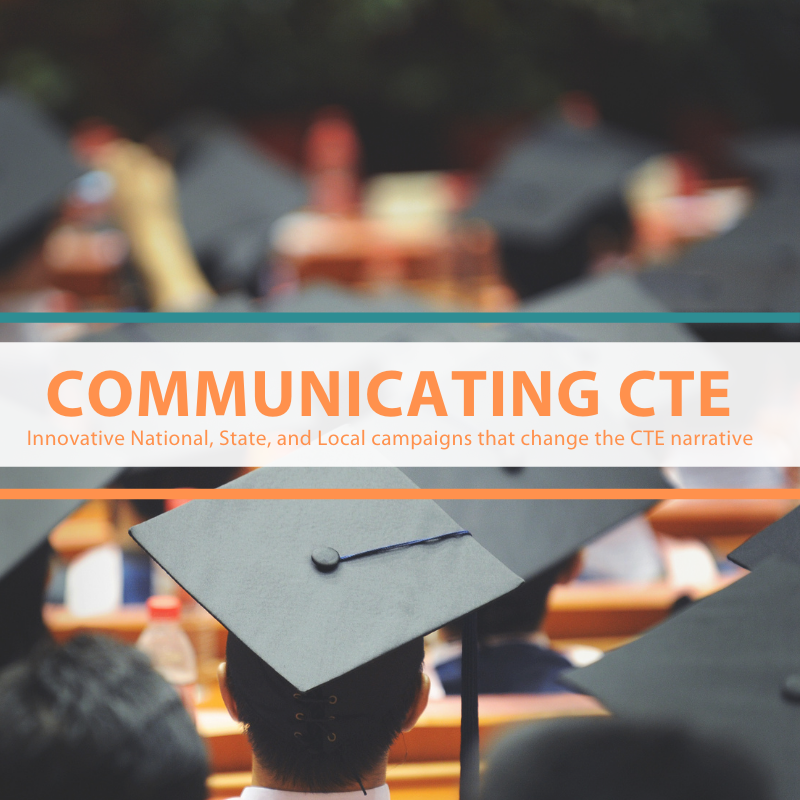 In April 2021, Advance CTE released
In April 2021, Advance CTE released 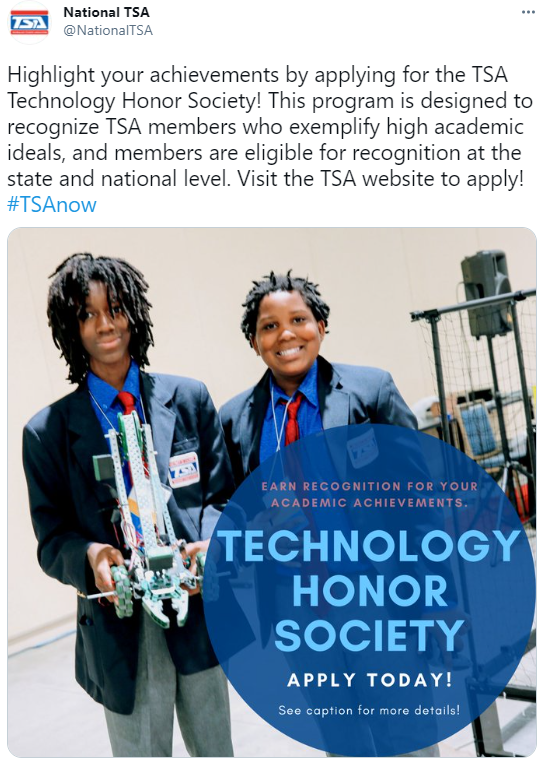 With a focus on recruitment and retention, it is important for learners and families of CTE to see success stories of individuals who look like them and share similar educational, racial, socio-economic, gender and geographic backgrounds.
With a focus on recruitment and retention, it is important for learners and families of CTE to see success stories of individuals who look like them and share similar educational, racial, socio-economic, gender and geographic backgrounds. Families and learners both participating in and considering CTE highly value an education experience that allows learners to explore opportunities after high school that lead to college and career success. In this example, Utah used graphics of learners engaging in real-world skills training to promote its Auto Mechanics and Repairs career pathway. This is a way of demonstrating the connection from CTE courses, work-based learning settings and youth apprenticeship programs to career success.
Families and learners both participating in and considering CTE highly value an education experience that allows learners to explore opportunities after high school that lead to college and career success. In this example, Utah used graphics of learners engaging in real-world skills training to promote its Auto Mechanics and Repairs career pathway. This is a way of demonstrating the connection from CTE courses, work-based learning settings and youth apprenticeship programs to career success.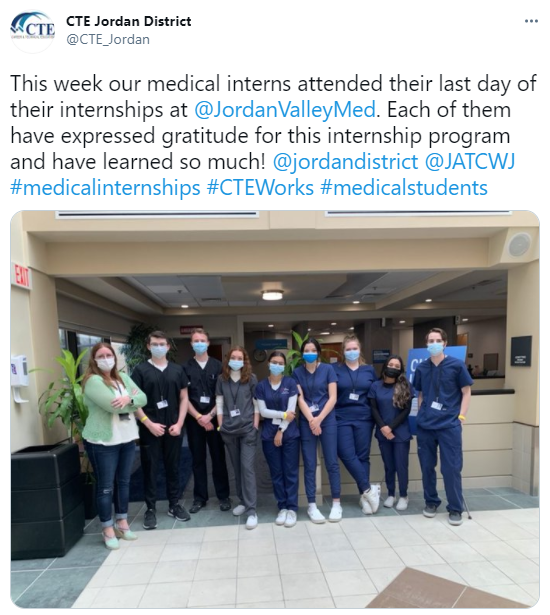 Using local examples can help explain the nuts and bolts of how CTE delivers success by making the connection between CTE and a specific career or industry, as well as highlighting partnerships with local colleges and employers that are recognizable to parents/guardians and learners.
Using local examples can help explain the nuts and bolts of how CTE delivers success by making the connection between CTE and a specific career or industry, as well as highlighting partnerships with local colleges and employers that are recognizable to parents/guardians and learners.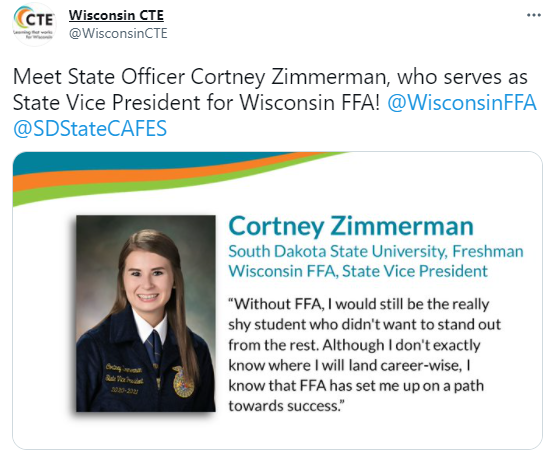 Wisconsin CTE showcased CTE to parents/guardians and learners by lifting up student success stories. One avenue to find compelling learner examples is to coordinate with statewide or local Career Technical Student Organizations (CTSOs) and gather testimonials, photos and stories to share on social media. This tweet focused on a local learner success story to create human interest in CTE. To help expand the reach of this tweet, Wisconsin CTE used relevant hashtags and tagged the state CTSO and the university the learner was attending. This type of post is a great way to highlight CTE and the many ways CTE benefits learners.
Wisconsin CTE showcased CTE to parents/guardians and learners by lifting up student success stories. One avenue to find compelling learner examples is to coordinate with statewide or local Career Technical Student Organizations (CTSOs) and gather testimonials, photos and stories to share on social media. This tweet focused on a local learner success story to create human interest in CTE. To help expand the reach of this tweet, Wisconsin CTE used relevant hashtags and tagged the state CTSO and the university the learner was attending. This type of post is a great way to highlight CTE and the many ways CTE benefits learners. 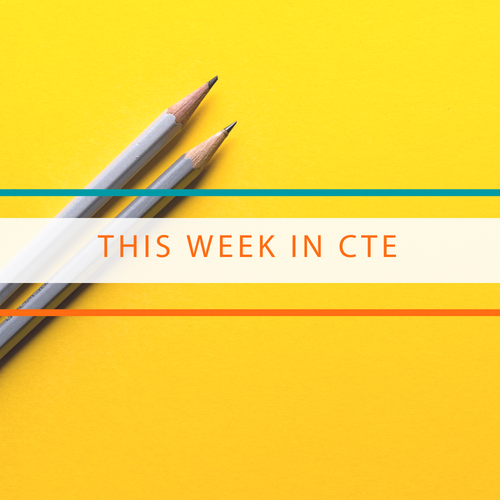 Developed with input from nearly 200 national, state and local education and workforce development leaders and supported by 40 national organizations,
Developed with input from nearly 200 national, state and local education and workforce development leaders and supported by 40 national organizations,  Throughout the month of October, we will celebrate careers in construction. Utilize these classroom
Throughout the month of October, we will celebrate careers in construction. Utilize these classroom  Through NSFY, Delaware, Kentucky, Louisiana, Massachusetts, Nevada, Ohio, Oklahoma, Rhode Island, Tennessee and Wisconsin took action to:
Through NSFY, Delaware, Kentucky, Louisiana, Massachusetts, Nevada, Ohio, Oklahoma, Rhode Island, Tennessee and Wisconsin took action to: As part of this initiative, Advance CTE has committed to developing resources to help state leaders close equity gaps in CTE. To provide state leaders with promising practices, Advance CTE added three new equity-focused policy profiles to the
As part of this initiative, Advance CTE has committed to developing resources to help state leaders close equity gaps in CTE. To provide state leaders with promising practices, Advance CTE added three new equity-focused policy profiles to the